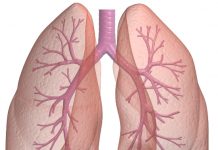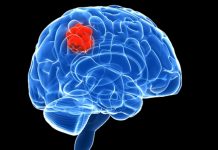 Are you having lung cancer? You can use chemotherapeutic drugs to cure the cancer.
Are you having lung cancer? You can use chemotherapeutic drugs to cure the cancer.
Some of them are platinol, Taxol, Oncovin, Gemzar and Paraplatin.
For lung cancer chemotherapy the combination of two or more drugs is used. This can improve the treatment. They include:
- Carboplatin plus VP-16
- Cisplatin plus vinorelbine tartrate
- Paclitaxel plus carboplatin and
- Cisplatin plus VP-16
Other lung cancer chemotherapeutic agents used are CeeNu (lomustine), Neosar, Hycamtin and Methotrexate. These drugs are approved by the Food and Drug Administration.
The frequent side effects of the lung cancer chemotherapy are Anemia. It can also cause other symptoms like shortness of breath, extreme tiredness or sometimes dizziness.
For the treatment of chemotherapy-related anemia, Epoetin alfa, a synthetic hormone that stimulates the production of RBCs is a prescribed drug.
Gemcitabine hydrochloride (Gemzar) has a unique ability against the non-small cell lung cancer (NSCLC), which is a chemotherapeutic drug.
If you are with advanced non-small cell lung cancer, combination therapy that includes the drugs vinorelbine tartrate (Navelbine) and gemcitabine, cisplatin (Platinol) are safe to use.
By the use of thrombocytopenia (reduced number of blood-clotting platelets) and neutropenia (reduced number of granular white blood cells), the toxic side effects of combined chemotherapy can be managed in some patients.
Small cell lung carcinoma (limited stage) can be treated by the combined chemotherapeutic drugs like prophylactic cranial (head) irradiation, or “PCI.” Leukoencephalopathy or leukodystrophy (degeneration of the brain tissue) is a condition produced due to the PCI treatment.
Leukoencephalopathy that appears 1 year after the irradiation, can lead to the motor abnormalities, intellectual changes and alterations in memory.
Biological agents like monoclonal antibodies attached to the toxin, a new chemotheraptic agent or new radiation technique and improved timing of chest radiation are used for the treatment of small cell lung carcinoma. Most of the studies found that these are more active against the SCLC.
Small cell lung carcinoma (Extensive-stage) is treated by the use of prophylactic cranial irradiation (PCI) which is a combined chemotherapeutic agent. These are used for the patients who respond completely to this therapy.
Combination chemotherapy includes vincristine sulfate (Oncovin), cyclophosphamide (Neosar) and doxorubicin (Adriamycin) that are used for the treatment of SCLC in extensive stage.
Apart from these chemotherapeutic agents, some other drugs prescribed by the physician such as etoposide (VP-16, VePesid) is also used for treatment of SCLC in extensive-stage.
Radiotherapy is used in metastatic areas where the combination treatment does not work. Bones, spinal cord and brain are the parts where the radiation can be directed.
In case, if you have not under gone the chemotherapeutic treatment, then you can be prescribed with the new agents. Such agents are still undergoing evaluation in further studies. They include etoposide (VP-16, VePesid) and Paclitaxel (Taxol).
Hycamtin capsules have been approved by the FDA, in October 2007, for patients having relapsed small cell lung carcinoma by following chemotherapy. Certain side effects include nausea, diarrhea and bone marrow suppression (neutropenia, thrombocytopenia and anemia).
Therefore, lung cancer chemotherapy can be used to treat the lung cancer.















